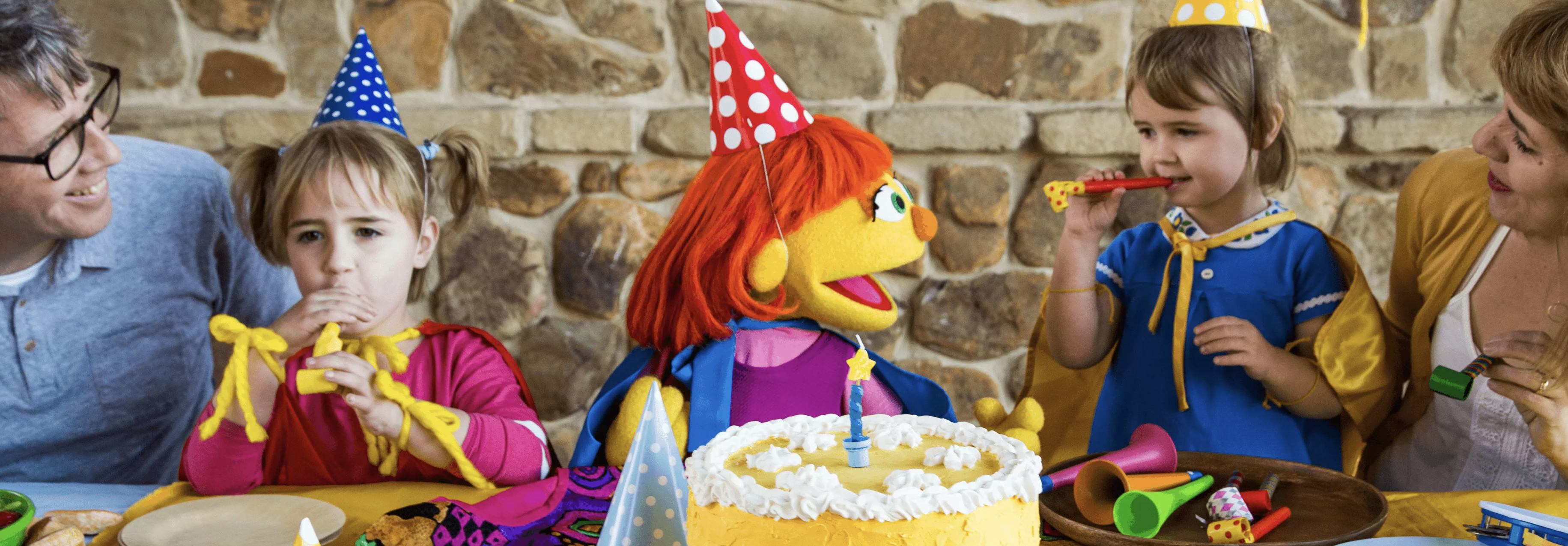photo by Sesame Street

Meet Julia!
Sesame Street announced that the character Julia, who has autism, will join the show in April. Increasing visibility of individuals with emotional, behavioral or cognitive differences, like Julia, goes a long way toward reducing the painful stigma that those individuals and their families face every day.
Here are some tips on how to have a meaningful conversation with your children:
- Educate yourself first: There are many kinds of disorders and disabilities, and not all are visible. Learning the basics – and being comfortable with your own understanding of these differences – will make talking to your child much easier.
- Use casual opportunities to start conversations: If possible, try to relate the individual with the disability to your child. Asking general questions to discover what your child knows and thinks about disabilities is also an easy way to initiate a conversation. For instance: “The character Julia was a pretty cool part of the show. She has autism. Do you know anyone like her? What do you think about that?”
- Provide accurate but digestible information: Depending on the age of your child, you will want to deliver information in an age-appropriate and understandable way. If your child is younger, a simple sentence or two may be enough. “His/her brain works a little differently than yours, honey. That’s okay – we’re all different and special in our own way.” Older children can understand more detailed conversations, so you may want to research the topic together so you can both learn more.
- Reassure your child: People with special needs and disabilities are human beings, just like everyone else. They feel the same feelings, have the same basic needs and didn’t choose to be different. Disabilities aren’t contagious or something that can be passed from one person to another.
- Remind your child about treating others with respect: Talk to your child about the Golden Rule: “Treat others the same way you want to be treated.” It’s also critical to understand that an individual is not defined by his or her disability. For instance, use “person-first” language, such as: “Julia has autism” instead of “Julia is autistic.”
- Take it slow: Allow your child to take some time to think about your conversation, and then follow-up later. To kick off this discussion, try saying, “Remember when we were talking about disabilities? I was wondering if you had any thoughts or questions, now that you’ve had time to think about it.”


